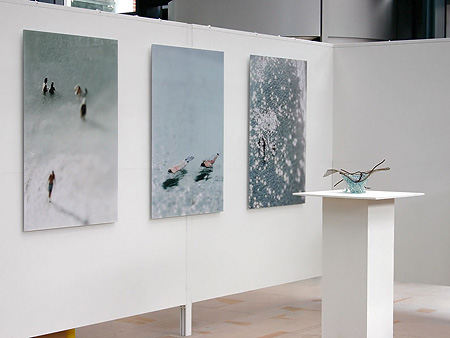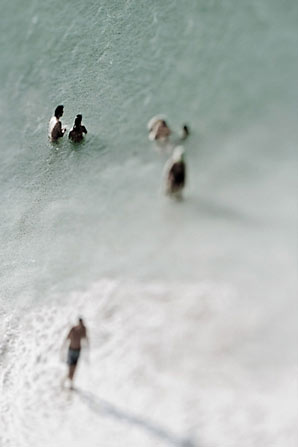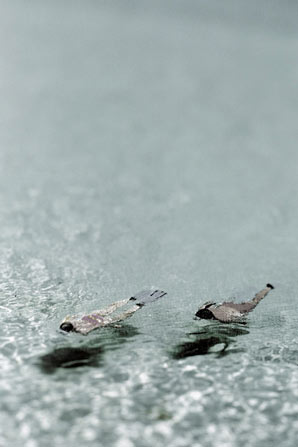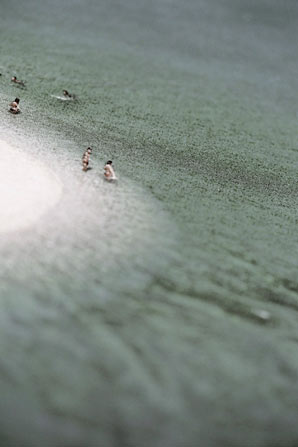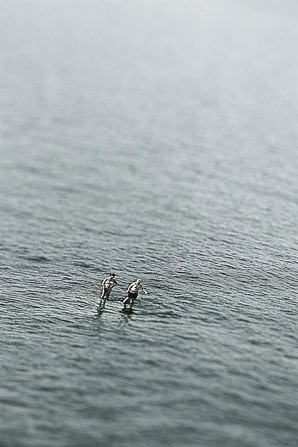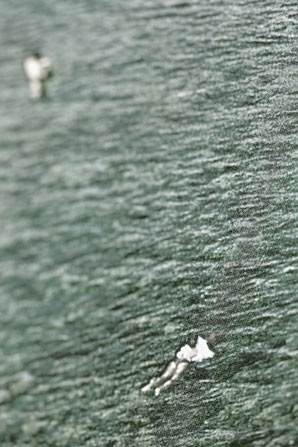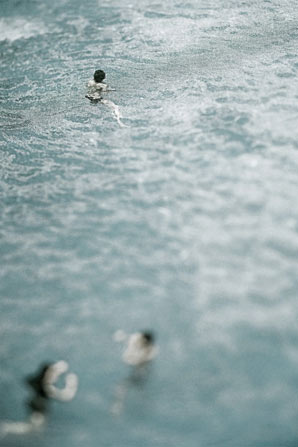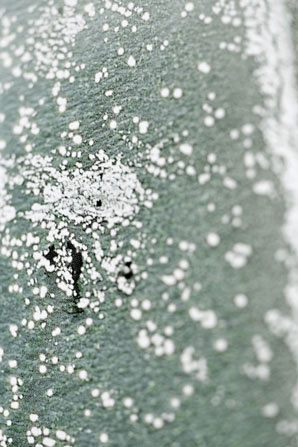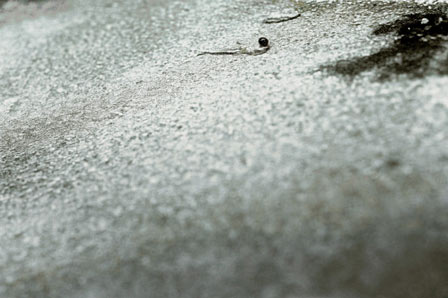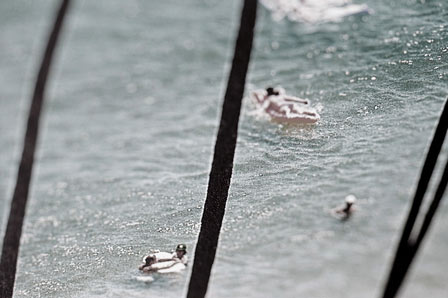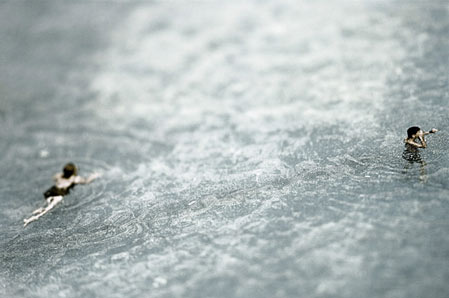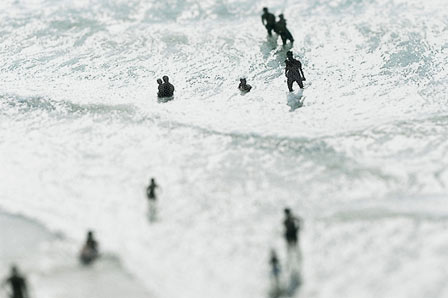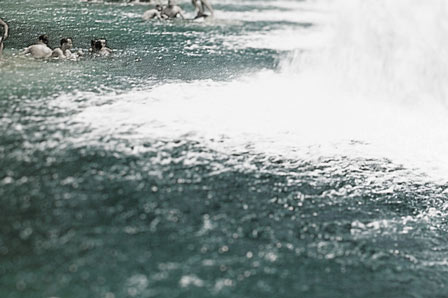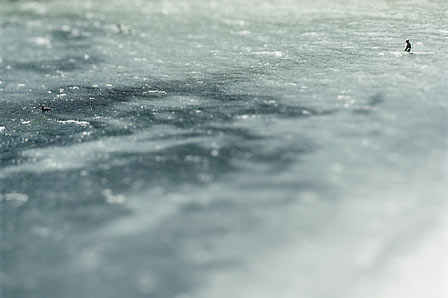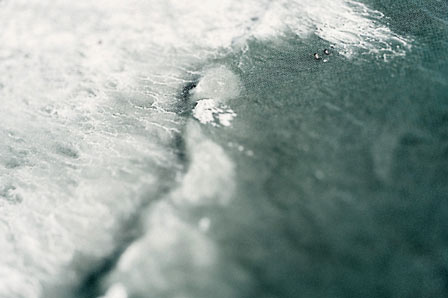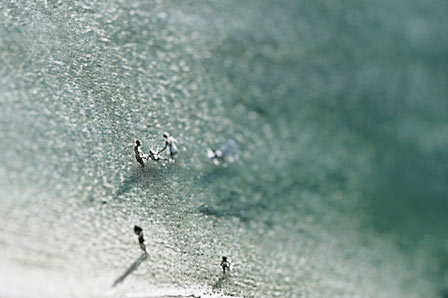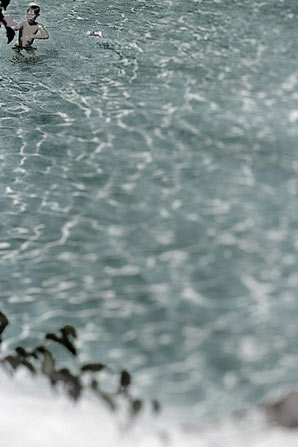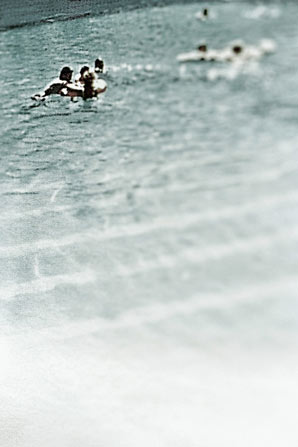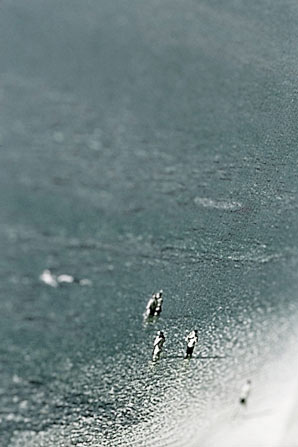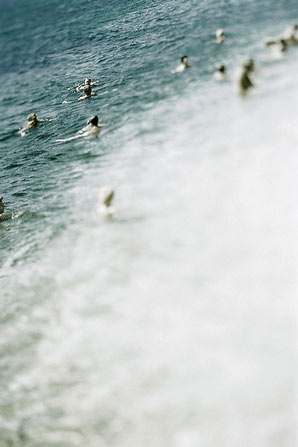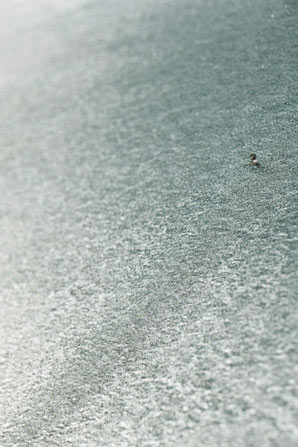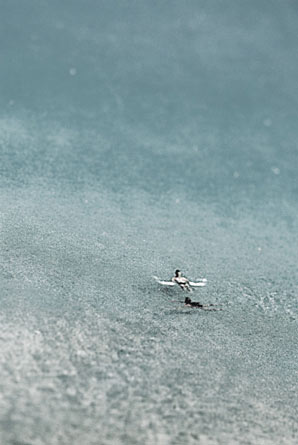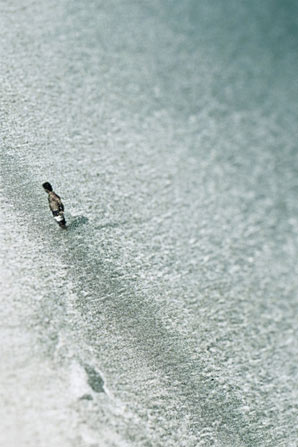bathers
2003/04
Thomas Zika – „bathers“
2003 / 04
Lamdaprints mounted with Diasec and Aludibond
80 x 120 cm, Edition of 5
bathers – a visual rush
My interest in art photography is to reflect on the conditions of the way we perceive reality. I believe that, nowadays, meaningfulness in the faculty of vision (our most immediate form of assimilating and constructing reality – the way we picture the world) is to be found in the pondering of this mode of perception as such. In book projects and exhibitions, I have ex-amined models of perception and of making sense of the world about us.
My current project is based on the element of water. Seventy per cent of the human body is water, and a similar proportion of the earth’s surface is covered in water. Even before we are born, we grow in the sustaining fluid of the uterus. Existing in a liquid sphere is an archaic, pre-conscious form of life that speaks of the roots of our human evolution. In our cultural history, the act of swimming or bathing has always had a dual connotation – of survival in a hostile element, and of a means to physical hygiene and relaxation. The cultural history of the representation of swimmers/bathers ranges from cave drawings to ancient Greek and Roman mosaics, medieval book illustrations, the paintings of a Cézanne or a Matisse and pin-up photography. From the twentieth century on, the tourist industry has exploited these powerful visual archetypes to advertise potential holiday destinations.
For my current piece, ‚bathers‘, my source material was print illustrations of bathers, people swimming, splashing about, all the images originating from advertising brochures for holidays and wellness venues.
I recycle the gaudy source images by re-photographing details from aerial views from a bird’s (or god’s) eye view with the aperture wide open and least possible focus; the horizon is cut out. I then process these pictures with image-processing software, such that pictures almost leached of any depth of colour result.
The turquoise blue of the Caribbean or the Aegean is diluted down to a subliminal wash. The result is a great void broken only by fragments of shore, waves and the odd bathing acces-sory here and there: not enough to mitigate the oppressive effect of the emptiness against the bathers who have mutated to mere abstract dots. The emptiness is fractured for all that, wherever the dot grid of the original printed matter becomes visible in the narrow plane of sharp focus. These images, sapped of colour almost to the threshold of black-and-white, have forfeited all their aggressive billboard effect and literally ‘swim’ to become ab-stract/concrete oscillation figures – a visual blur, a ‘noise’ only intensified by the highly uniform common visual factor, which I vary only minimally.
‘White noise’, information theory tells us, appears to be the state of maximum possible in-formation. I intend to dedicate my future work in the image media to this greatest possible state of information called ‘white noise’.
„bathers“, Installationsansicht Galerie Poller, Frankfurt am Main, 2004

„bathers“, Institut für Bildwissenschaften Wuppertal, 2004
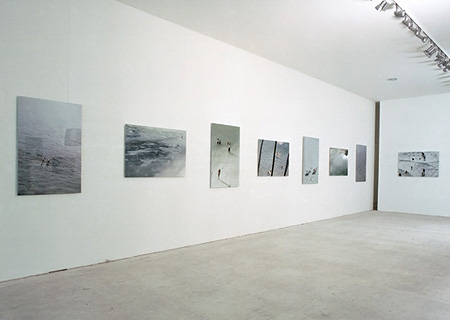

„bathers“, Galerie Obrist, Essen 2006

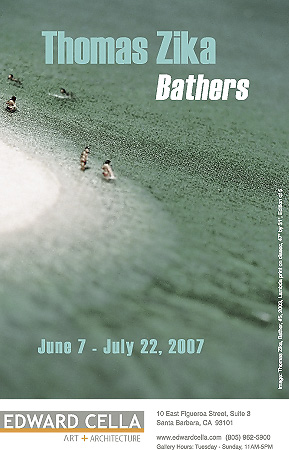
„bathers“, Edward Cella Art + Architecture, Los Angeles 2007

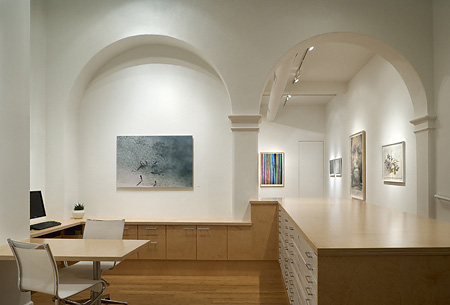
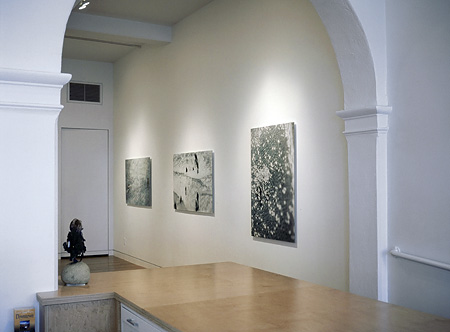
„bathers“, Ausstellungsansicht DEW21, Dortmund 2006
